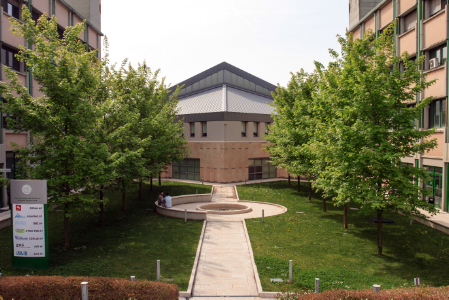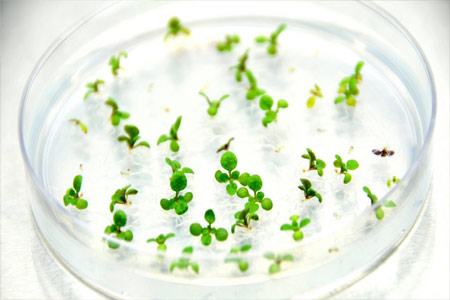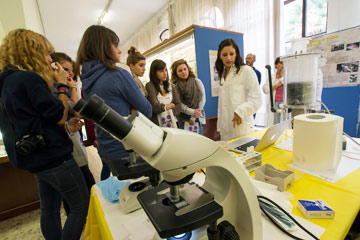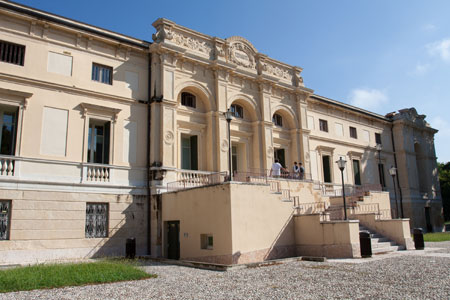Course partially running
- Course code
- 4S00197
-
Name of lecturer
-
Ugo Luigi Monaco
- Number of ECTS credits allocated
-
4
- Academic sector
-
CHIM/02 - PHYSICAL CHEMISTRY
- Language of instruction
- Italian
- Location
- VERONA
- Period
-
1st Semester dal Oct 1, 2009 al Jan 31, 2010.
To show the organization of the course that includes this module, follow this link  Course organization
Course organization
Lesson timetable
Learning outcomes
The course Physical Chemistry II for the degree in Molecular and Industrial Biotechnology aims at developing the ability to quantitatively describe the properties of molecules, especially those of interest to the biologist. After an introduction to the foundations of Quantum mechanics and to general aspects of spectroscopy the elements of Statistical Mechanics, esential to understand the relationship between the macroscopic world and the world of molecules, are introduced. In addition to the theoretical treatment, the course offers a series of laboratory experiments in which the students are given ample freedom to prepare and carry aout the experiments
Syllabus
Quantum Mechanics.Principles of Quantum Mechanics:waves, particles and quanta.Planck's solution of the black body radiation problem.Einstein's explanation of the photoelectric effect. Bohr's model of the hydrogen atom and its explanation of the hydrogen spectrum. Rydberg's formula.
De Broglie's postulate. The electron microscope. Schroedinger's equation. Wave function. Physical interpretation. Probability and heisenberg'suncertainty principle. The meaning of Schroedinger's equation. Operators. Eigenvalues and eigenfunctions. The meaning of Energy. The particle in the box. Solving Schroedinger's equation. Wave function. Principles that can be applied to other problems. The harmonic oscillator. Classical treatment.Allowed energies. Examples. Solving Schroedinger's equation for the harmonic oscillator. Diatomic molecules. Morse's potential. Physical meaning. The rigid rotor. Classical treatment. Physical meaning of the solution. Schroedinger's equation in spherical polar coordinates. Solving Schroedinger's equation for the rigid rotor. Separation of the angular dependence. The associated legendre equation. Determination of bond lengths. The hydrogen atom wave functions. Atomic orbitals. Solving Schroedinger's equation. Energies and wave functions. Quantum numbers.The hydrogen-like wave functions. Shape of the orbitals. Use of these wave functions. Angular momentum. Chemical bonds. Why the covalent bond is formed. The role of potential and kinetic energy. The variation principle. The secular equations. Applications of the LCAO (linear combinations of atomic orbitals) method to diatomic molecules. Bonding and antibonding orbitals. Wave functions and energy. Physical meaning of the overlap, resonance and Coulomb integrals. Molecular orbitals of diatomic molecules. Energy levels. Electronic configuration of the molecules. Hund's rule.Double and triple bonds. Heteronuclear diatomic molecules. Polyatomic molecules. Hybridization. Nonbonding lone pairs. The geometry of orbitals. Example: the peptide bond. The dipole moment. Definition and measurement. Induction of a dipole moment. Polarizability. Debye's equation. Noncovalent forces. Potential energy functions. The origin of attractive and repulsive forces. The van der Waals radii. Physical meaning.
An introduction to spectroscopy. The interaction of light with matter. Overview.. THe Beer-Lambert law. Light scattering. Rayleigh, Brillouin and Raman scattering. Reflection and refracion. Fluorescence and phosphorescence. Optical rotation and circular dichroism. Typical energy levels of a molecule. The electromagnetic spectrum. Interaction of a hemoglobin solution with radiation of all possible frequencies. Extinction coefficient and refractive index. Classical description of absorption and dispersion. Resonance. The resonance of an electron driven by a light wave. The two polarizabilities. Physical meaning. Relatioship with the extiction coefficient and refractive index. Quantum mechanical description of radiation absorption. The transition dipole moment. Selection rules. Radiationless transitions.
Statistical Thermodynamics. Introduction. Entropy and degeneracy. Calculating omega and S. Probabilities of quantum states. Derivation of the Boltzmann distribution. Calculation of the total energy. The molecular partition function. Degeneracy and the partition function. The energy of the particles in a box. The energy of harmonic oscillators. The energy of rigid rotors. The classical principle of equipartition of energy. Quantum mechanical effects on energy and heat capacity. The heat capacity of crystals and proteins. Statistical mechanical interpretation of heat and work. Interpreatation of entropy. The syatem partition function and its relation to the molecular partition function. The system partition function for indistinguishable particles. Dependence of the free energy of a gas on concentration Calculating the probability of complex molecular states. Biological applications. The complex states of a molecule of cDNA. Poliprotic acids. The conformation of flexible polumers. The one-dimensional and three-dimensional random walk. Models for flexible polymers and polymers of limited flexibility. The Flory characteristic ratio. Kuhn's theory. Effect of the excluded volume.
Assessment methods and criteria








